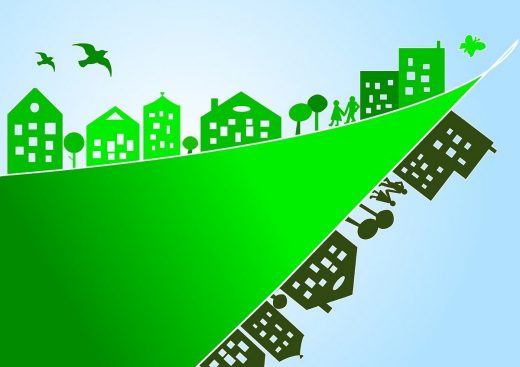Merging aesthetic and efficiency in sustainable architectural design, Living spaces blending creativity and practicality guide
Merging Aesthetic and Efficiency in Sustainable Architectural Design
24 July 2024
In today’s rapidly evolving architectural landscape, the integration of sustainable energy solutions has become a cornerstone in the design and functionality of modern structures. As environmental concerns escalate alongside technological advancements, architects and designers are increasingly called upon to blend sustainability with aesthetics. This article explores how modern architectural design embraces sustainable energy solutions, focusing on innovative applications that enhance building efficiency and contribute to a greener planet.
Economic Viability of Renewable Energy Financing
Implementing these technologies in commercial settings can also be economically viable through various financing options, including commercial solar PPA (Power Purchase Agreement) financing. This arrangement exemplifies how businesses can embrace solar technology without the substantial upfront costs associated with such installations. Under commercial solar PPA financing, a third-party developer installs, owns, and maintains the solar panel system.
At the same time, the host customer agrees to purchase the generated power at a predetermined rate that is typically lower than the local utility’s rate. This model facilitates the transition to renewable energy and stabilizes energy costs, providing long-term financial benefits. Beyond PPAs, myriad financial mechanisms, including grants, tax incentives, and bespoke funding options, enhance the accessibility of sustainable solutions, promoting broader adoption across various sectors. These financial supports are pivotal in encouraging companies to invest in green technologies, ultimately contributing to a more sustainable economic landscape.
Solar Power Integration
One of the most visible trends in sustainable architecture is solar energy. Solar panels are no longer an afterthought tacked onto rooftops after construction; they are now integral components of the architectural design process. These panels are seamlessly incorporated into the building envelope, often serving dual functions as power generators and aesthetic elements. For example, some buildings feature solar panels that double as weatherproofing and decorative facades, reducing the need for additional materials.
Solar technology’s versatility allows it to be adapted to various architectural styles, from sleek, contemporary office buildings to rustic residential homes. Notably, solar panels significantly decrease reliance on non-renewable energy sources in regions where sunlight is abundant, cutting energy costs and reducing carbon footprints. Furthermore, innovative projects have demonstrated how solar panels can be integrated into the glass of windows and skylights, ensuring energy efficiency without compromising natural light or design aesthetics.
Wind Energy and Material Optimization
Beyond solar power, architects are turning to other forms of renewable energy, such as wind turbines. Small, building-mounted turbines can now be incorporated into a building’s design to harness wind energy without detracting from the structure’s visual appeal. These turbines create a symbiotic relationship with their surroundings, particularly in high-altitude or coastal areas where wind is plentiful and consistent.
Optimizing building materials and construction techniques is another critical component of integrating sustainable energy solutions in architecture. The use of recycled materials, green insulation, and eco-friendly paints are practices gaining traction in the industry. Buildings designed with sustainability in mind often feature large windows for natural heating and lighting, green roofs that provide insulation and absorb rainwater, and smart systems that regulate energy use based on occupancy and weather conditions.
Future Challenges and Opportunities
However, integrating sustainable energy solutions into architectural design is challenging. It requires innovative thinking, collaboration among various disciplines, and a willingness to invest in the future. The regulatory environment and building codes continue evolving to support and promote sustainable development. The role of technology in sustainable architecture cannot be overstated.
The continuous development of smarter, more efficient building technologies will be paramount as we look toward the future. Integrating artificial intelligence and IoT in building management systems is already making buildings more responsive to environmental conditions and occupant needs. This technological leap improves the sustainability of buildings and enhances the quality of life for its users. Looking ahead, the challenge for the industry will be to continue innovating while making these technologies accessible and practical for widespread use.
Conclusion
Incorporating sustainable energy solutions into modern architectural design is more than a trend; it is an essential progression toward more responsible and forward-thinking construction practices. As the world leans towards sustainability, the role of architects in shaping eco-friendly yet visually appealing buildings is undoubtedly significant. By embracing renewable energy technologies and sustainable building practices, the architecture industry addresses environmental challenges and sets a standard for future developments.
Comments on this guide to Merging Aesthetic and Efficiency in Sustainable Architectural Design article are welcome.
Health Articles
Health Design
6 Home Improvements That Can Improve Your Health
How To Become A Healthier Architect
Importance of Health Education for Students
Healthcare Buildings
Healthcare Architecture Posts
Comments / photos for the Merging Aesthetic and Efficiency in Sustainable Architectural Design page welcome






